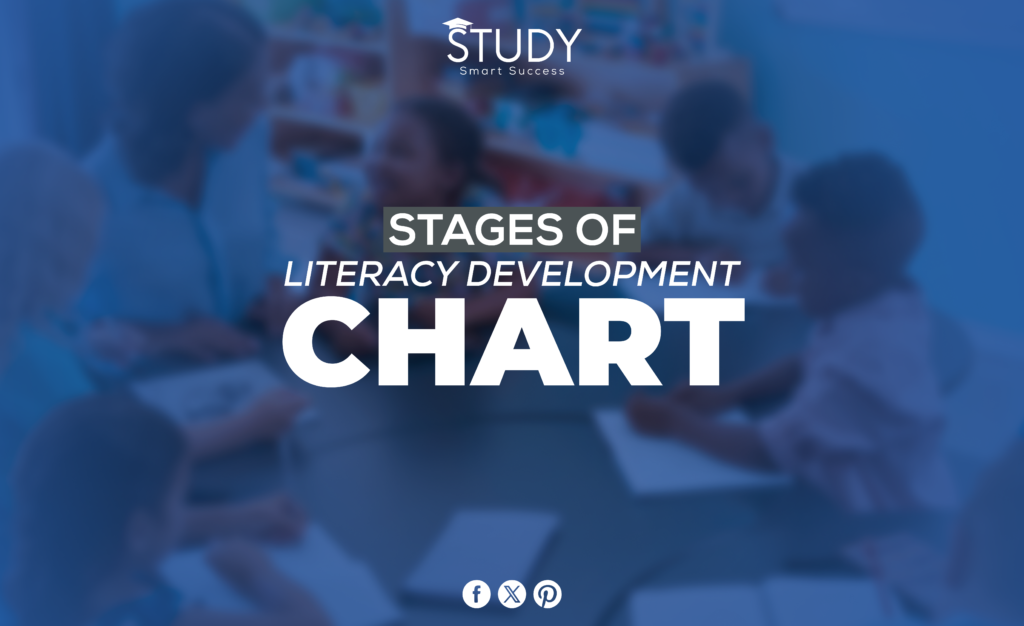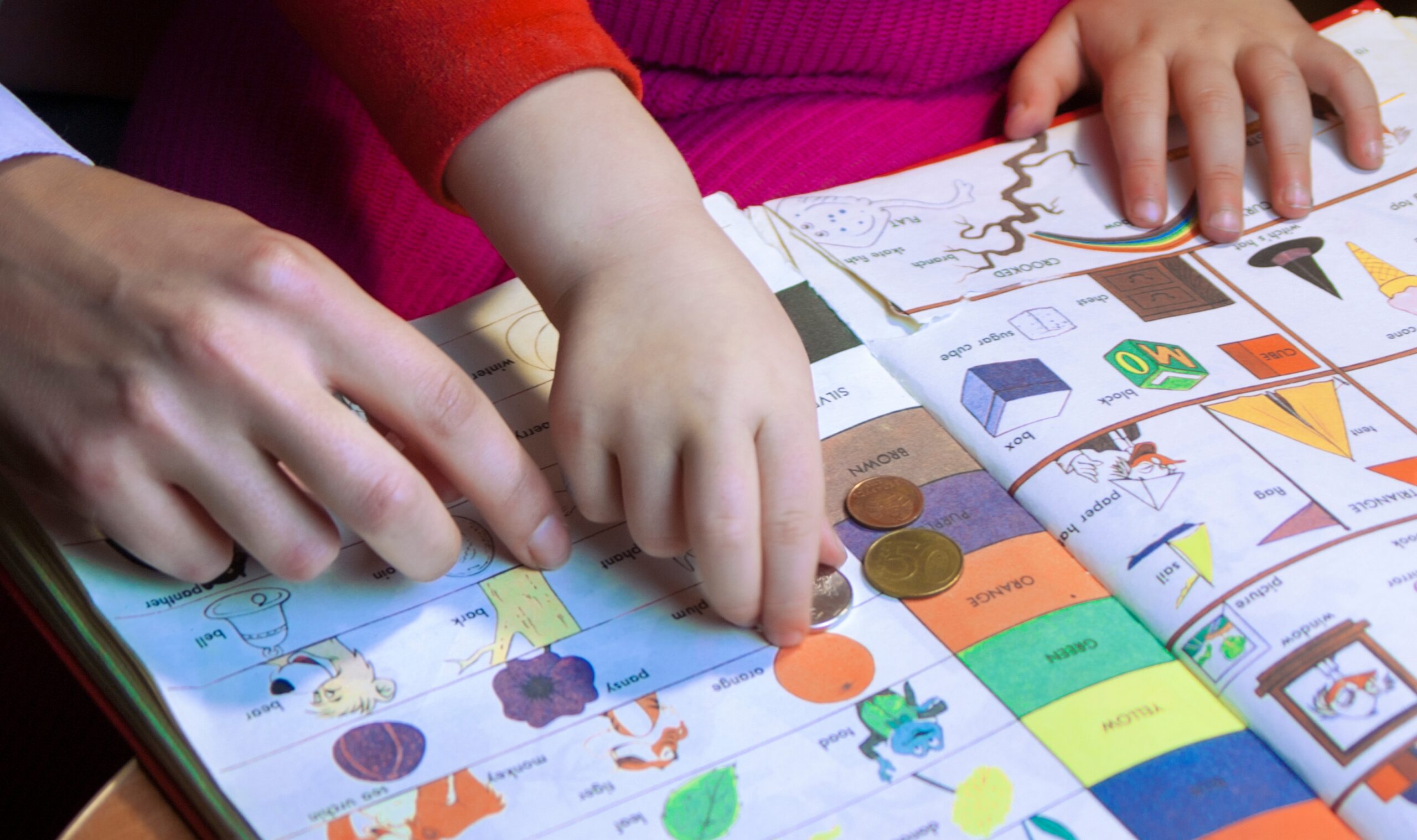Teachers need to understand the different stages of literacy development and how they work together. Children learn the basic skills to speak clearly and know what they are learning through this process. There isn’t a straight or even road to reading, though. As kids grow up, they go through different stages that involve a mix of learning and experiencing things.
In this in-depth guide, we’ll look at the different emergent stages of literacy development to give teachers the information they need to help their students learn to read and write effectively.
The Crucial Milestones of Literacy Development
Stage 1: Emergent Pre-Readers
Children are just beginning to understand the uses of print at this age. Often, they interact with books in ways that make it look like they are reading, but they use pictures and memory instead of understanding words. This stage is between birth and six, and laying the groundwork for later reading and writing skills through talk, play, and reading is important.
Key Indicators:
- Shows interest in books and reading.
- It uses scribbles that resemble writing.
- He pretends to read and write.
- Has a growing vocabulary.
What Educators Can Do:
- Encourage exploring books and other printed materials.
- Read and discuss stories with children.
- Provide materials for drawing and writing.
- Model language and storytelling.
- Foster a language-rich environment with lots of talk and stories.
Stage 2: Alphabetic Principle
Kids between ages four and seven understand that letters can represent sounds in spoken words. They learn phonemic awareness, which means they learn to recognise and work with different sounds. The alphabetic principle stage is a key step between being able to recognise letters and being able to understand how sounds relate to letters.
Key Indicators:
- Recognises and names the letters of the alphabet.
- Understands that letters represent sounds.
- He begins to associate sounds with letters.
- It uses invented spelling to write.
Instructional Strategies:
- Teach letter-sound correspondences.
- Introduce strategies for decoding and encoding words.
- Use magnetic letters, letter tiles, or other manipulatives for practice.
- Practice “stretching out” words to hear all their sounds.
- Engage in reading and writing activities that model sounds and letters’ relationships.
Stage 3: Early Readers
Kids usually reach this stage between the ages of five and seven, which is the start of real reading. Readers in their early stages can understand and use texts that are reliable or have patterns. They can also start to recognise high-frequency words by sight. With phonics understanding, they are also better at reading and recognising more complicated words.
Key Indicators:
- Recognises some high-frequency words by sight.
- Understands that words are made up of sounds and can be segmented.
- It relies on context and pictures to help read and understand text.
- Reads simple, patterned or repetitive texts with increasing fluency.
Classroom Activities:
- Shared reading and writing experiences.
- Guided reading in small groups.
- Sight word practice.
- Encourage students to use context to figure out unknown words.
- Provide books with familiar language patterns and repetitive texts.
Stage 4: Fluent Readers
Fluency starts to show up when a child ages seven to nine reads with more confidence and expression. They read more naturally as time goes on because they read smoothly and with feeling. They can also read alone and for longer while better understanding what they read.
Key Indicators:
- Reads aloud with appropriate phrasing and intonation.
- Reads silently for extended periods.
- Reads a variety of texts, both fiction and non-fiction.
- Recognises and understands more complex words and sentence structures.
- Demonstrates comprehension by retelling, summarising, or responding to text.
Educational Practices:
- Encourage independent reading.
- Model fluent reading.
- Provide opportunities for repeated reading of familiar texts.
- Use strategies like reading with expression and appropriate pace.
- Scaffold comprehension through questioning and discussion.
Stage 5: Reading to Learn
Around 13, kids move from “learning to read” to “reading to learn.” They learn new words and use their reading to figure out what it all means. Next, we’ll talk about how to understand different kinds of books so that you can learn across the curriculum.
Key Indicators:
- Uses context to determine word meaning.
- Acquires new vocabulary from reading.
- Understands and uses various text structures to aid comprehension.
- Can read and comprehend more discipline-specific texts like science or history.
- Begins to read and comprehend with a critical stance, asking questions about the author’s purpose and the text’s reliability.
Classroom Strategies:
- Introduce and practice comprehension strategies such as summarisation, questioning, and predicting.
- Teach vocabulary in context.
- Model and teach the use of text features for understanding.
- Encourage silent, analytical reading.
- Utilise technology and multimedia for cross-curricular reading and learning.
Stage 6: Mature Readers and Writers
Understanding difficult language patterns and mastering words with more than one letter are signs of this stage, which lasts from the early teens onward. Adult readers and writers know how to read critically, compare and contrast information from different sources, and write for various goals and groups.
Key Indicators:
- Reads a wide range of literature and informational texts.
- Writes with an awareness of purpose and audience.
- Writes using increasingly varied and complex sentence structures.
- It uses a broad vocabulary and multiple strategies for determining the meaning of unknown words.
- Consistently uses correct grammar, punctuation, and spelling in writing.
Teaching Techniques:
- Engage in literary analysis and discussion.
- Model and practice various writing forms, such as essays and narratives.
- Teach advanced language and writing conventions.
- Encourage independent reading and writing.
- Provide opportunities for extended writing experiences and projects.
Literacy Development and Diverse Learning Styles
Many things specific to a child’s literacy development, such as their learning style, language background, and availability of tools, affect their literacy development. Teachers must be aware of these differences and ensure the Classroom is safe for everyone.
Cultural and Linguistic Considerations:
- Foster a multicultural classroom environment.
- Recognise and respect various dialects and languages.
- Provide bilingual and multicultural reading materials.
- Engage families and community resources to support Literacy.
Differentiated Instruction:
- Assess student learning styles and preferences.
- Use a variety of instructional methods and materials.
- Group students based on instructional needs and strengths.
- Provide individualised instruction and support.
Technology and Literacy:
- Integrate technology into reading and writing instruction.
- Use digital tools for reading texts, writing, and communication.
- Explore apps and online platforms for personalised learning experiences.
- Teach digital Literacy and responsible use of technology.
Assessing Literacy Development
Assessment is a key part of figuring out where kids are in their literacy development and what they need to do to move forward. It helps with planning lessons, intervening, and giving help.
Types of Literacy Assessment:
- Formal assessments like standardised tests and reading inventories.
- Informal assessments such as running records, observations, and student conferences.
- Ongoing progress monitoring to track growth over time.
Using Data to Inform Instruction:
- Analyse assessment data to identify areas of strength and need.
- Adjust instruction and support based on assessment results.
- Collaborate with colleagues and specialists to interpret data and plan instruction.
- Communicate assessment results with students and families to set goals and strategies.
Fostering Literacy in the 21st Century Classroom
Literacy lessonsCenturyo change to prepare students for the challenges and possibilities of the 21st Century because classrooms today differ from those in the past.
Literacy Across the Curriculum:
- Integrate reading and writing into all content areas.
- Teach subject-specific literacy skills.
- Help students make connections between different types of texts.
Project-Based Learning and Literacy:
- Use projects and real-world tasks to develop literacy skills.
- Integrate research, reading, and writing in project work.
- Engage students in authentic reading and writing experiences.
Multimedia and Literacy:
- Teach students to analyse and create multimedia texts critically.
- Use digital storytelling and presentations for literacy instruction.
- Provide access to a variety of media and texts.
Global Literacy:
- Foster an understanding of global issues and perspectives through Literacy.
- Connect with classrooms and authors from around the world.
- Read and analyse texts from various cultures and languages.
Conclusion
As a result, literacy development is a long, complicated process that happens gradually. By knowing the different stages of literacy development and the different learning needs of their students, teachers can give them rich, helpful learning experiences that help them become readers and writers for life. They can prepare kids to be successful in the 21st Century, which is always changing, Centuryng a range of teaching methods and tools. Teaching kids how to read and write is essential for their success in school, on the job, and personal lives.



